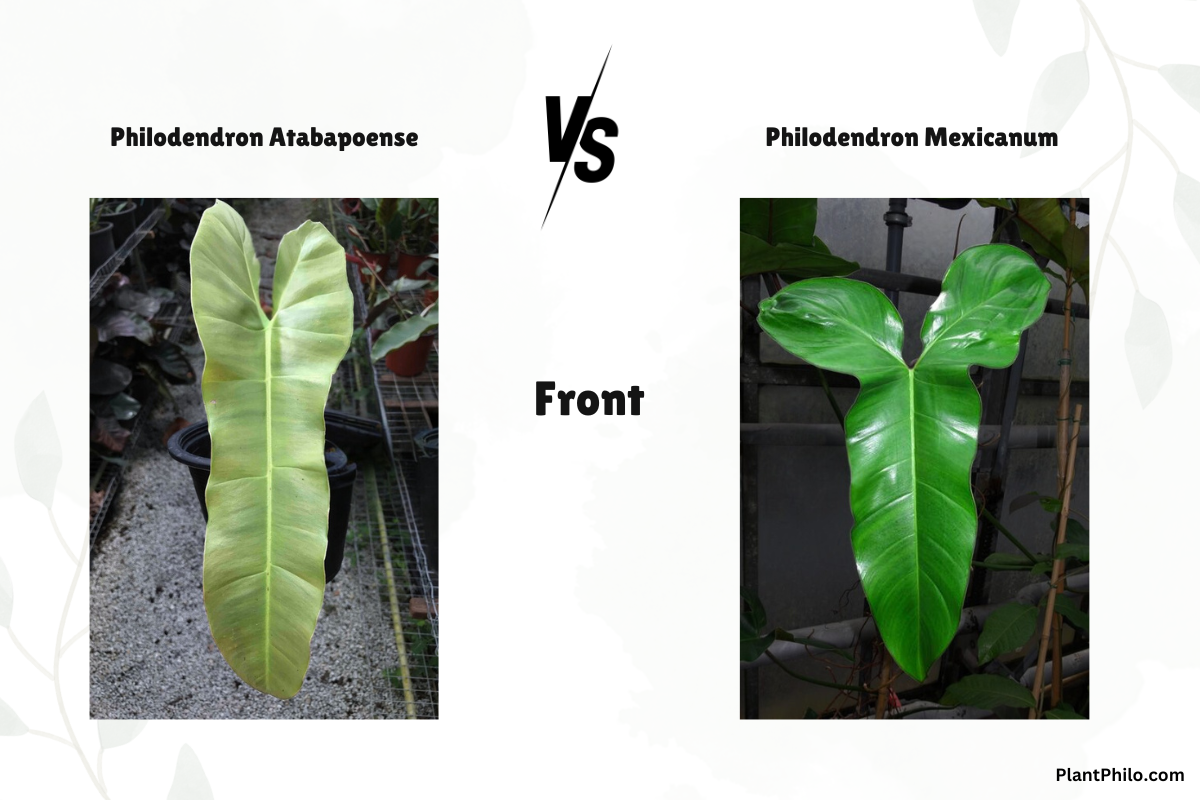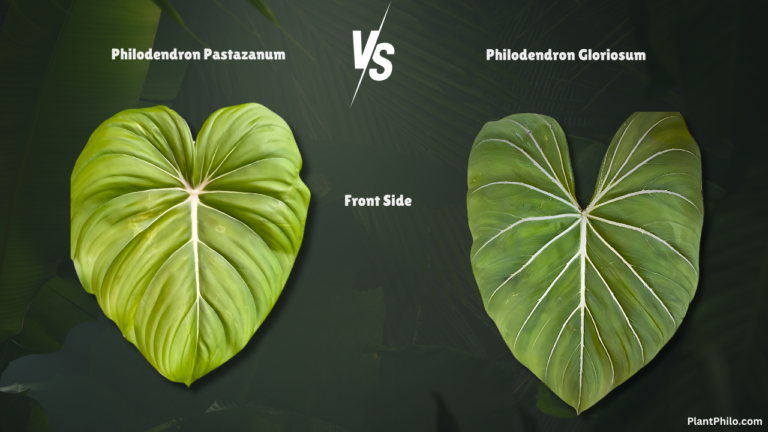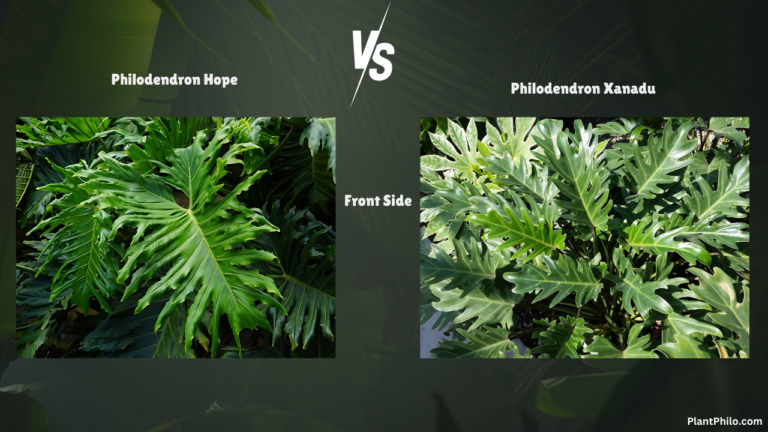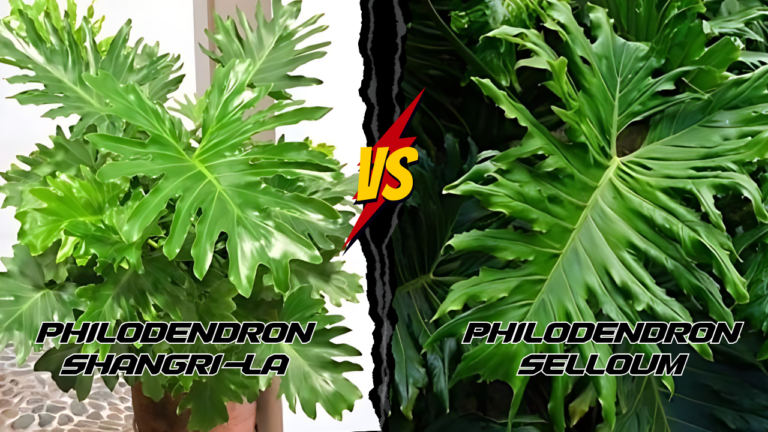Philo Atabapoense vs. Mexicanum: Stop the Plant Confusion!
Philodendron Atabapoense and Mexicanum – two names that send ripples of excitement through the hearts of plant enthusiasts. But let’s face it, choosing between these two tropical beauties can feel like standing at a crossroads in the Amazon rainforest, unsure of which path to take.
Fear not, fellow plant parent! We’re here to guide you through this verdant labyrinth, shedding light on the unique characteristics and care needs of each plant.
By the end of this journey, you’ll be equipped to make a choice that will bring a touch of the jungle into your home without the fear of turning your living room into a tangled mess of vines. Let’s distinguish between Philodendron Atabapoense vs. Mexicanum.
Philodendron Atabapoense vs. Mexicanum: Can You Spot the Difference?
At first glance, these two Philodendrons might seem like long-lost twins, separated at birth in the depths of the rainforest. But look closer, and you’ll start to notice subtle differences that set them apart. Let’s break down Philodendron Atabapoense vs. Mexicanum key features side-by-side:
| Feature | Philodendron Atabapoense | Philodendron Mexicanum |
| Leaf Shape | Arrow-shaped, can become elongated | Large, heart-shaped with ruffled edges |
| Leaf Color | Deep green with burgundy underside | Deep green with velvety texture |
| Petiole | Green or slightly red, up to 2 ft. long | Short, green, and sturdy |
| Stem | Green or slightly brown | Thick, reddish-brown, often with aerial roots |
| New Leaf Color | Deep green | Bronze or reddish |
| Growth Habit | Vining, slower-growing | Climbing or creeping, moderate growth |
| Soil | Well-draining aroid mix | Well-draining aroid mix with added organic matter |
| Temperature | 70-85°F (21-29°C) day, above 60°F (15°C) night | 65-80°F (18-27°C) day, above 55°F (13°C) night |
| Humidity | High (60-80%) | High (60-80%) |
| pH Level | 5.0-7.0 | 5.5-6.5 |
| Rarity & Price | Less rare, less expensive | More rare, more expensive |
| Other Notes | More compact, prefers consistent care | Larger, more adaptable to varying conditions |
Beyond the Surface: Understanding Their Origins
Just like people, plants are shaped by their origins. Knowing where these Philodendrons hail from gives us valuable clues about their care preferences.
- Philodendron Atabapoense: This species is a true child of the Amazon, specifically the banks of the Atabapo River in Venezuela and Colombia. Picture it thriving in the dappled sunlight filtering through the dense canopy, its leaves glistening with rainforest humidity. To keep it happy indoors, you’ll need to recreate this tropical paradise as best you can. Think bright, indirect light, plenty of humidity, and a well-draining potting mix.
- Philodendron Mexicanum: This beauty calls the rainforests of southern Mexico and Central America home. It’s a bit more adaptable than its Atabapoense cousin, tolerating slightly lower temperatures and light levels. However, it still craves that humid jungle vibe and will reward you with lush growth if you can provide it.
Philodendron Atabapoense vs. Mexicanum: A Visual Guide.
Identifying these two Philodendrons is like solving a botanical puzzle. The leaves hold the key!
- Shape: Atabapoense leaves are like elegant arrowheads, sometimes stretching out into elongated shapes as they mature. Mexicanum leaves, on the other hand, are bold and heart-shaped, with ruffled edges that add a touch of drama.
- Color: Both plants sport deep green leaves, but the undersides tell a different story. Atabapoense boasts a striking burgundy underside, while Mexicanum’s underside is a more subtle green.
- Texture: Atabapoense leaves have a smooth, almost glossy surface. Mexicanum leaves, however, are velvety to the touch, inviting you to run your fingers over their lush surface.
Stems and Petioles: Philodendron Atabapoense vs. Mexicanum
Don’t overlook the stems and petioles (leaf stalks)! They play a crucial role in distinguishing these two plants.
- Atabapoense: Slender, green or reddish stems with long, graceful petioles.
- Mexicanum: Thick, reddish-brown stems often adorned with aerial roots. The petioles are short and sturdy, holding those magnificent heart-shaped leaves aloft.
Growth Habits and Care: Nurturing Your Jungle Gems
Both Atabapoense and Mexicanum are climbers at heart, eager to reach for the sky (or at least the top of your moss pole).
- Growth Pattern: Atabapoense is a slow but steady climber, eventually reaching impressive heights with the right support. Mexicanum is a bit faster and can be trained to climb or allowed to creep along the ground.
- Light: Both plants thrive in bright, indirect light. Direct sun is a no-no, as it can scorch their delicate leaves.
- Water: Water when the top inch of soil is dry. Remember, these are rainforest plants, not cacti! They like their soil consistently moist but not waterlogged.
- Soil: A well-draining aroid mix is the key to happy roots. Think of it as a fluffy, airy bed for your plant to snuggle into.
- Humidity: Aim for 60-80% humidity. Misting, pebble trays, or a humidifier can help you achieve this tropical atmosphere.
- Temperature: Both plants prefer warm temperatures between 65-85°F. Avoid cold drafts and sudden temperature fluctuations.
FAQs: Your Burning Questions Answered
Which plant is easier to care for, Philodendron Atabapoense vs. Mexicanum?
Mexicanum is generally considered a bit more forgiving of less-than-ideal conditions. It can tolerate slightly lower light and temperatures than Atabapoense.
Can I grow these plants outdoors?
Yes, but only in warm, humid climates. They are sensitive to cold and frost.
How often should I fertilize my Philodendron?
Fertilize during the growing season (spring and summer) with a diluted liquid fertilizer every 4-6 weeks.
Why are the leaves on my Philodendron turning yellow?
Yellowing leaves can be a sign of overwatering, underwatering, or nutrient deficiencies. Check the soil moisture and adjust your watering accordingly.
Can I propagate these plants?
Yes, both Atabapoense and Mexicanum can be propagated from stem cuttings.
What pests should I watch out for?
Common pests include spider mites, mealybugs, and scale. Keep an eye out for signs of infestation and treat promptly.
How do I train my Philodendron to climb?
Provide a moss pole or trellis for your plant to climb on. Gently tie the stems to the support as they grow.
Can I repot my Philodendron?
Yes, repot every 1-2 years in the spring or summer when the plant becomes rootbound.
What is the best way to clean the leaves of my Philodendron?
Gently wipe the leaves with a damp cloth to remove dust and grime.
Where can I buy Philodendron Atabapoense and Mexicanum?
These plants can be found at specialty plant shops, online retailers, or through local plant groups and communities.
Choosing Your Perfect Match
Choosing between Philodendron Atabapoense vs. Mexicanum ultimately comes down to personal preference and your growing environment.
If you’re looking for a compact, elegant plant with striking leaf coloration, Atabapoense might be your perfect match. If you prefer a bolder, more adaptable plant with velvety leaves and a faster growth rate, Mexicanum could be the one for you.
No matter which path you choose, remember that both of these Philodendrons are living treasures from the rainforest. With a little care and attention, they will thrive in your home, bringing a touch of the wild into your everyday life.




